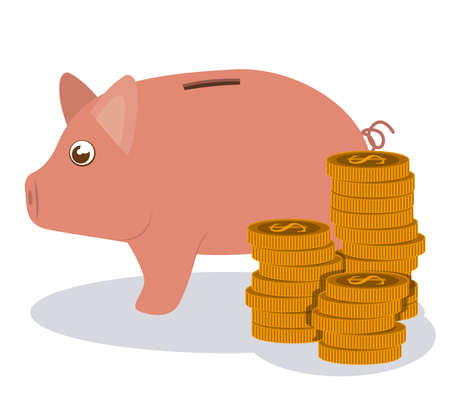Understanding Required Minimum Distributions (RMDs)
If you’ve been stashing away money in your retirement accounts for years, RMDs might sound intimidating, but understanding them is the first step to keeping more of your hard-earned savings. Let’s break down what RMDs are, why they exist, and what every American needs to know about how and when to withdraw from retirement accounts like 401(k)s and IRAs.
What Are Required Minimum Distributions?
Required Minimum Distributions—commonly called RMDs—are the minimum amounts you must withdraw from certain retirement accounts each year once you reach a specific age. The IRS wants its share of taxes on your pre-tax retirement dollars, so it doesn’t let you keep those funds growing tax-deferred forever. That’s where RMD rules come into play.
Why Do RMDs Exist?
The main reason behind RMDs is simple: the government gave you tax breaks for saving in accounts like traditional IRAs and 401(k)s, but eventually, Uncle Sam wants his cut. By requiring withdrawals, the IRS ensures you start paying taxes on your retirement savings during your lifetime.
Which Accounts Are Subject to RMDs?
| Account Type | Subject to RMD? |
|---|---|
| Traditional IRA | Yes |
| Rollover IRA | Yes |
| 401(k), 403(b), 457(b) | Yes |
| Roth IRA (owner) | No |
| Roth 401(k) (before 2024) | Yes |
| Roth 401(k) (2024 and after) | No |
When Do You Have to Start Taking RMDs?
For most people, RMDs start at age 73 if you turn 72 after January 1, 2023. If you reached age 72 before then, your RMDs likely started at age 72 or even earlier under previous rules. Your very first RMD must be taken by April 1 of the year after you hit the required age. After that, future RMDs are due by December 31 each year.
Quick Reference Table: Key RMD Ages
| If You Turned This Age… | Your First RMD Must Be Taken By… |
|---|---|
| 72 before Jan 1, 2023 | April 1 of the year after turning 72 |
| 73 after Jan 1, 2023 | April 1 of the year after turning 73 |
How Much Do You Have to Withdraw?
The exact amount changes each year and is based on your account balance as of December 31 of the previous year and an IRS life expectancy table. Basically, as you get older, the percentage you must withdraw goes up.
Simplified Example:
| Age | IRA Balance at Year-End | IRS Divisor* | Your RMD Amount |
|---|---|---|---|
| 73 | $500,000 | 26.5 | $18,868 ($500,000/26.5) |
| 80 | $400,000 | 18.7 | $21,390 ($400,000/18.7) |
| 85 | $300,000 | 14.8 | $20,270 ($300,000/14.8) |
*IRS divisors are based on the Uniform Lifetime Table (most common for account owners).
The Bottom Line on Knowing Your RMDs Early On:
If you miss an RMD or take too little, the penalty can be steep—up to 25% of what you should have withdrawn (recently reduced from 50%). So knowing these basics sets you up for smarter planning—and potentially lower taxes down the road.
2. Timing Strategies for RMDs
When it comes to Required Minimum Distributions (RMDs), timing is everything. The IRS says you have to take RMDs each year starting at age 73 (for most people), but exactly when you take them within the calendar year is up to you. Smart timing can help you keep more of your hard-earned savings and avoid getting bumped into a higher tax bracket. Let’s explore some practical strategies that can make a big difference.
Choosing When in the Year to Take Your RMD
You don’t have to take your entire RMD in January, or wait until December. Some folks like to take their distribution early in the year for peace of mind, while others wait until the end of the year to let their investments grow as long as possible. There’s no right or wrong answer—it depends on your personal situation.
| Timing Option | Potential Benefit |
|---|---|
| Early in the Year | Funds available sooner; can reinvest in taxable accounts if not needed for spending |
| Late in the Year | Maximum tax-deferred growth in retirement account |
| Split Throughout Year | Smoother cash flow; flexibility to adjust based on market conditions and income needs |
Spreading RMDs Across Multiple Accounts
If you have more than one IRA, you can total up all your IRAs’ required distributions and take the combined amount from just one account or spread it across several. This gives you flexibility—maybe you want to leave one account untouched for legacy reasons, or maybe one account is invested more conservatively and better suited for withdrawals.
Example: Spreading RMDs
Let’s say Jane has three IRAs with a total RMD of $10,000. She could:
- Take $10,000 from just one IRA
- Split it: $5,000 from IRA #1, $3,000 from IRA #2, $2,000 from IRA #3
- This flexibility helps her manage which investments she sells and keeps her asset allocation balanced.
The Impact on Tax Brackets
Your RMD counts as ordinary income, so it could push you into a higher tax bracket. If you have other sources of income—like Social Security, pensions, or part-time work—you’ll want to consider how the timing and size of your RMD fits with everything else.
| Taxable Income Range (2024 Single Filer) | Federal Tax Rate |
|---|---|
| $11,601 – $47,150 | 12% |
| $47,151 – $100,525 | 22% |
| $100,526 – $191,950 | 24% |
| $191,951 – $243,725 | 32% |
Avoiding “Bracket Creep” with Smart Timing
If taking your full RMD at once would push you over into a higher bracket—even by just $1—you pay a higher rate on that extra income. Consider spreading out withdrawals or coordinating with other income sources (like delaying Social Security) to stay below key thresholds. Some retirees even use “fill up the bracket” strategies: only withdraw enough to stay under a certain limit each year.
The Bottom Line on Timing Your RMDs
The best timing strategy depends on your goals: do you want steady cash flow? The most investment growth? To minimize taxes? Talk with your financial advisor or tax pro to build a plan that makes sense for your unique life story—and helps put you closer to financial freedom.

3. Utilizing Qualified Charitable Distributions (QCDs)
One of the smartest ways to minimize taxes on your Required Minimum Distributions (RMDs) is by using Qualified Charitable Distributions, or QCDs. If you’re at least 70½ years old, the IRS allows you to donate up to $100,000 each year directly from your IRA to a qualified charity. The best part? This direct transfer counts toward your RMD and isn’t included in your taxable income.
How QCDs Work
Let’s break it down with a practical story. Imagine Susan, who just turned 73 and needs to take a $15,000 RMD from her traditional IRA this year. She regularly gives to her local animal shelter anyway, so she decides to send $10,000 of her RMD directly to the charity as a QCD. Now, only $5,000 of her RMD will be counted as taxable income for the year. By gifting through a QCD, Susan supports a cause she loves and reduces her tax bill at the same time.
Key Benefits of QCDs
| Benefit | Description |
|---|---|
| Satisfies RMD Requirement | Your QCD can count toward all or part of your annual RMD. |
| Lowers Taxable Income | The amount given via QCD is excluded from your adjusted gross income (AGI). |
| No Need to Itemize | You benefit from the tax savings even if you take the standard deduction. |
| Supports Charities Directly | Your chosen charity receives funds straight from your IRA without taxes taken out. |
QCD Rules You Need to Know
- You must be age 70½ or older at the time of the distribution.
- The maximum annual QCD amount is $100,000 per person.
- The money must go directly from your IRA custodian to a qualified charity—no detours into your personal account!
- Only IRAs are eligible for QCDs; 401(k)s and other retirement plans don’t qualify unless rolled into an IRA first.
If you’re already charitably inclined, using QCDs is a win-win strategy—it’s like putting your money to work for both your favorite causes and your own financial well-being!
4. Tax-Efficient Withdrawal Strategies
Smart Ways to Coordinate RMDs with Your Income
When you hit your early 70s, the IRS says it’s time to start taking Required Minimum Distributions (RMDs) from your traditional IRAs and 401(k)s. But just because you have to take money out doesn’t mean you have to pay more taxes than necessary! Here are some practical tips on how you can line up your RMDs with other income sources, Roth conversions, and Social Security benefits—so you keep more of your hard-earned savings.
Strategically Pairing RMDs with Other Income
One of the keys to minimizing taxes is knowing when and how much income to recognize each year. Consider all your income sources: pensions, part-time work, investments, and Social Security. If you can delay certain types of income or spread them out over several years, you might stay in a lower tax bracket.
| Income Source | Tax Impact | Strategy |
|---|---|---|
| RMDs | Taxed as ordinary income | Coordinate withdrawals to avoid bumping into higher brackets |
| Social Security Benefits | Up to 85% may be taxable based on total income | Delay claiming benefits or stagger RMDs for lower combined income |
| Investment Income | Capital gains/losses affect taxable income | Harvest losses in high-income years to offset gains/RMDs |
Timing Matters: RMDs & Social Security Benefits
If you haven’t started Social Security yet, consider delaying it until after age 70. Not only does your monthly benefit increase, but it also gives you a few years where you can take larger RMDs or do Roth conversions without pushing your total income too high. Once Social Security kicks in, your total income rises—and so could your tax bill.
Using Roth Conversions as a Tax Tool
A Roth conversion lets you move money from a traditional IRA into a Roth IRA. You’ll pay taxes on the amount converted now—but future withdrawals from the Roth account are tax-free. The best time for this is before RMDs begin or during low-income years. After RMDs start at age 73, you must first take out your RMD for the year before converting any additional funds.
Example: Coordinating Conversions & Withdrawals
| Age | Action Taken | Tax Benefit |
|---|---|---|
| 68-72 (pre-RMD) | Convert portions of IRA to Roth while in lower tax bracket | Pays lower taxes now; reduces future RMDs and taxable income later |
| 73+ | Take annual RMD; convert extra funds if still in reasonable bracket | Keeps taxable income predictable; builds up tax-free Roth funds for later use or heirs |
Your Personalized Withdrawal Plan Pays Off!
The bottom line? Lining up your RMD withdrawals with other sources of income—and taking advantage of strategies like Roth conversions—can make a big difference in how much tax you owe each year. Everyone’s situation is unique, so working with a financial advisor who understands these strategies can help you stay on track toward financial freedom.
5. State Tax Considerations and Local Opportunities
If you’re planning for your Required Minimum Distributions (RMDs), don’t forget that state and local taxes can play a big role in how much you keep. While federal tax rules are the same across the country, each state has its own approach to taxing retirement income—including RMDs. Understanding these differences can help you make smarter moves with your money.
Why State Taxes Matter
Some states tax your RMDs just like regular income, while others give retirees a break. A few states don’t have any income tax at all! Knowing what to expect in your state can help you plan withdrawals and maybe even time a move if you’re thinking about relocating in retirement.
Common State Approaches to RMDs
| State Type | Tax Treatment of RMDs | Examples |
|---|---|---|
| No State Income Tax | No state tax on RMDs | Florida, Texas, Nevada, Alaska, Washington, Wyoming, South Dakota |
| Partial Exemptions or Credits | Some or all retirement income may be excluded or credited | Pennsylvania (exempts most retirement income), Illinois, Mississippi, New York (with age restrictions) |
| Full Taxation as Ordinary Income | RMDs taxed just like other income | California, Connecticut, Nebraska, Vermont |
Local Taxes and Special Rules
In some places, local governments also add their own taxes or offer special deductions for seniors. Cities like New York may have unique local taxes or credits for retirees. It’s important to check both state and city rules when planning for RMD withdrawals.
State-Specific Credits and Deductions for RMDs
Certain states provide extra perks to help retirees save on taxes:
- Pennsylvania: Most retirement account withdrawals aren’t taxed at all.
- Georgia: Excludes up to $65,000 of retirement income per person over age 65.
- Colorado: Allows those over 55 to subtract up to $24,000 of pension and IRA income from taxable state income.
- New Jersey: Offers a “Retirement Income Exclusion” for qualifying seniors.
How to Take Advantage of Local Opportunities
- Check your state’s department of revenue website: This is the best place to start learning about current rules and benefits for retirees.
- Sit down with a local tax professional: They know the ins and outs of both state and local opportunities.
- If you’re considering moving in retirement: Factor in potential tax savings from states with lower or no taxes on RMDs.
- Review annually: State laws can change, so review your situation every year before taking your RMD.
The bottom line: State and local taxes can make a big difference in how much you pay on your RMDs. By staying informed about your state’s rules and looking out for special credits or deductions where you live, you’ll keep more of your hard-earned retirement savings working for you.
6. Working with Financial and Tax Advisors
When it comes to minimizing taxes on Required Minimum Distributions (RMDs), having the right professionals by your side can make all the difference. The American tax code is complex, and RMD rules have their own set of challenges. Working with financial and tax advisors who specialize in retirement planning ensures you’re not missing out on opportunities that could save you money.
Why Professional Guidance Matters
Advisors who understand the ins and outs of RMDs can help you:
- Choose the best accounts for withdrawals to lower your tax bill
- Identify strategies like Qualified Charitable Distributions (QCDs) or Roth conversions
- Avoid costly mistakes, such as missed RMD deadlines that result in steep IRS penalties
- Stay up-to-date with ever-changing IRS rules and regulations
Tailored Strategies for Every Retiree
No two retirement situations are alike. A good advisor takes time to learn about your specific goals, income sources, and family needs. They’ll recommend a custom plan that might include:
| Strategy | How It Helps You |
|---|---|
| Roth IRA Conversions | Reduce future RMDs by moving funds from traditional IRAs to Roth IRAs, where RMDs are not required. |
| Qualified Charitable Distributions (QCDs) | Satisfy your RMD while donating directly to charity, keeping the amount out of your taxable income. |
| Withdrawal Sequencing | Coordinate withdrawals from taxable, tax-deferred, and tax-free accounts for maximum efficiency. |
| Tax-Loss Harvesting | Offset gains by selling investments at a loss, which can help lower overall taxes in high-RMD years. |
The Value of a Team Approach
Your financial advisor and tax professional can work together to provide a holistic view of your finances. This team approach helps ensure nothing slips through the cracks—whether it’s maximizing Social Security benefits or coordinating estate plans alongside RMD strategy.
Real-Life Example: Carol’s Experience
Carol, a retiree from Ohio, once tried handling her RMDs alone. She accidentally missed an important deadline and faced a hefty penalty. After working with a local financial planner, she learned how to time her withdrawals better and even used QCDs to support her church—reducing her taxable income at the same time.
The bottom line: Don’t go it alone. Partnering with skilled professionals can uncover ways to minimize your RMD taxes and keep more money working toward your retirement dreams.


